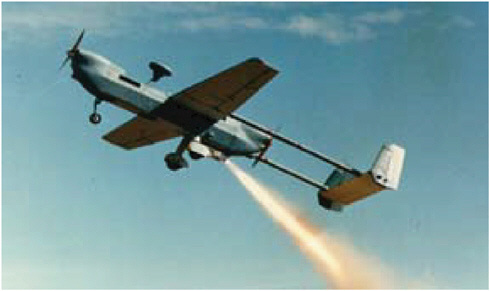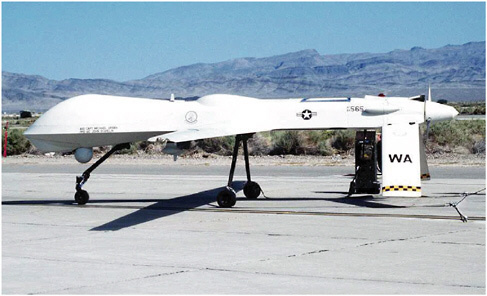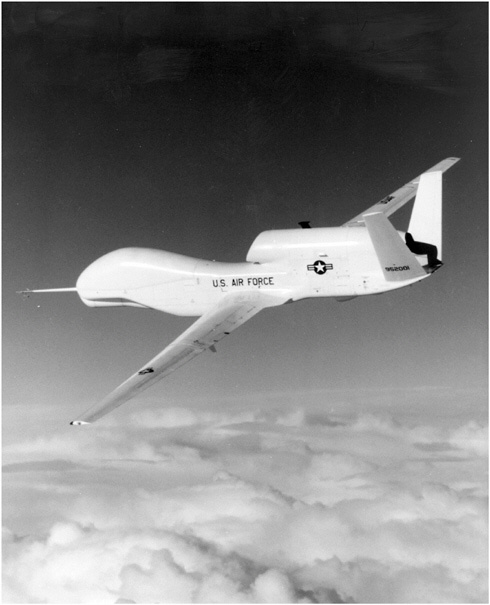1
Introduction
Uninhabited air vehicles (UAVs) are vehicles “specifically designed to operate without an onboard operator or aircraft intended to be manned that have been converted to unmanned operation” (USAFSAB, 1996). UAVs range in size from a few inches to hundreds of feet, can be fixed or rotary wing aircraft, can be remotely piloted or autonomous, and can be jet or piston powered. Despite technological shortcomings that have slowed their rate of acceptance (e.g., inability to provide adequate control “feel” for remote pilots; inability to meet both cost and performance targets), the momentum is increasing to consider using UAVs in a wide range of applications including the following:
-
weather and atmospheric research (Niewoehner, 1998)
-
reconnaissance and surveillance (Francis, 1998)
-
conventional combat roles (SAB, 1996)
-
innovative roles that were not previously possible (e.g., “dull, dirty, and dangerous” missions, such as operations in chemical and biological weapons environments [Air University, 1996; SAB, 1996] and operations that require micro air vehicles [McMichael, 1998])
The U.S. Air Force (USAF) has included UAVs in its long-term plans for difficult or risky military missions. In a report by the USAF Scientific Advisory Board (USAFSAB), New World Vistas: Air and Space Power for the Twenty-First Century (USAFSAB, 1995), it was suggested that UAVs, working in concert with inhabited vehicles, could become an integral part of the force structure. The report recommended that the USAF support technology development for cost-effective UAVs that can perform a wide range of combat tasks. In 1996, the
USAFSAB conducted a study to assess technology development for changing UAVs from their current reconnaissance role to much broader combat and non-combat roles (USAFSAB, 1996). The SAB recommended that the USAF (1) exploit the capabilities of reconnaissance UAVs (Predator, Darkstar, and Global Hawk) in the near term, (2) consider the suppression of enemy air defenses (SEAD) mission as a near-term combat objective, and (3) develop advanced penetrating uninhabited combat air vehicles (UCAVs) for midterm and long-term use. The SAB reports focused on technological and operational issues related to UAVs, the communications and combat systems in which they would operate, and the context in which they would be used. This report focuses on just one aspect of UAV systems, air vehicle technologies.
Air Force operation scenarios envision multiple vehicle types and multiple vehicles of the same type acting in “coordinated clusters” (USAFSAB, 1996). This approach would provide broader capabilities than UAVs operating independently as reconnaissance, survelliance, countermeasures, or attack vehicles. UAVs operating in coordinated clusters would also have the potential to cover a larger area in a complicated battle zone and would protect valuable assets (e.g., high-performance sensors).
RECONNAISSANCE PROGRAMS
The U.S. Department of Defense (DOD) has been developing UAVs with a wide range of characteristics to meet a variety of mission requirements. UAV programs that have been undertaken by the U.S. military and intelligence communities are summarized in Table 1-1. Of the recent programs, Pioneer has been deployed, Hunter was cancelled after initial production, Predator is in low-rate initial production, Darkstar was terminated prior to initial production, and Global Hawk and Outrider are still being developed (CBO, 1998). Historically, UAVs have been considered advanced-concept technology demonstrations, which are intended to be low-cost, low-risk technology demonstrations.
Pioneer
Pioneer (Figure 1-1) was developed by Pioneer UAV, Inc., to provide targeting support for Navy ships (Pioneer UAV, Inc., 1997). Since Pioneer was first deployed in 1986, it has been used for reconnaissance, surveillance, target acquisition, battle-damage assessment, and battle management. Pioneer is 14 feet long and is driven by a pusher-propeller powered by a 26 hp, two-stroke, twin-cylinder, rear-mounted engine. Pioneer is equipped with electro-optical and infrared video sensors. It can carry a 75-pound payload, has a maximum altitude of 15,000 feet, a range of 185 kilometers, and an endurance of five hours at that radius. Although Pioneer is expected to be retired from service in 2003, sustainment programs are being contemplated to extend the life of Pioneer to 2005–2008.
TABLE 1-1 Major UAV Programs
|
Program |
Period |
Description |
Status |
|
Lightning Bug |
1964–1979 |
Reconnaissance drone first used by the Air Force during the Vietnam War |
Retired |
|
Aquila |
1979–1987 |
Tactical UAV for Army commanders |
Canceled |
|
Amber |
1984–1990 |
Classified endurance UAV |
Canceled |
|
Pioneer |
1986–present |
UAV originally acquired to assess battle damage by naval gunfire |
Deployed |
|
Medium Range |
1987–1993 |
Tactical UAV for the Air Force and Navy |
Canceled |
|
Hunter |
1988–1996 |
Joint tactical UAV |
Canceled after low-rate initial production |
|
Gnat-750 |
1988–present |
Long-endurance UAV developed with CIA funding; exported commercially |
Used for training and intelligence missions |
|
Darkstar |
1994–1999 |
Stealthy endurance UAV for highthreat environments |
Canceled |
|
Predator |
1994–present |
Long-endurance UAV for theater commanders; based on the Gnat-750 |
In low-rate initial production |
|
Global Hawk |
1994–present |
High-altitude, long-endurance (HALE) UAV |
In development |
|
Outrider |
1996–present |
Joint tactical UAV |
In development |
|
Source: CBO, 1998. |
|||
Hunter
Hunter (Figure 1-2) was developed by Israeli Aircraft Industries to perform short-range surveillance for ground forces. Hunter is equipped with electro-optical and infrared video sensors. It was designed to carry a 200-pound payload and has a maximum altitude of 15,000 feet, a range of 267 kilometers, and endurance of 11 hours at that radius. Hunter was cancelled after low-rate initial production of seven systems, with eight aircraft each. The aircraft are currently being used by the U.S. Army and U.S. Navy for training and mission development.
Predator
Predator (Figure 1-3) is a derivative of the Central Intelligence Agency’s Gnat-750. Also known as Tier II, Predator is a medium-range, medium-altitude vehicle capable of all-weather reconnaissance, surveillance, targeting, and battle-damage assessment. Manufactured by General Atomics, Predator carries a payload of 450 pounds, has a maximum altitude of 25,000 feet, a range of 926 kilometers, and endurance at that radius of more than 20 hours. Unlike Pioneer or
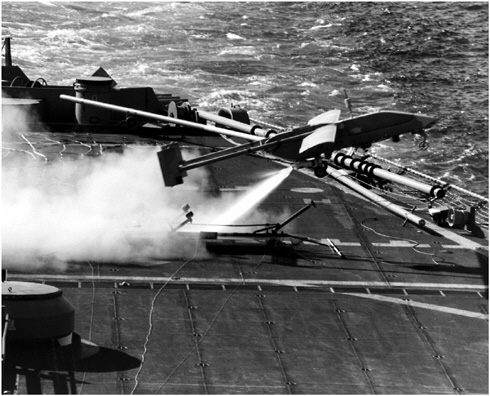
FIGURE 1-1 Pioneer UAV taking off from the deck of the USS Iowa. Source: Pioneer UAV, Inc.
Hunter, Predator’s satellite communication system enables it to operate beyond line-of-sight from the control station. Predator has been successfully demonstrated in reconnaissance missions during peacekeeping operations in Bosnia. The Air Force plans to purchase 12 systems with four vehicles each.
Global Hawk
Global Hawk (Figure 1-4) is a developmental high-altitude, long-endurance (HALE) reconnaissance vehicle designed to complement the Darkstar UAV. Also known as Tier II+, Global Hawk has been designed as a “highly capable, moderately survivable” system capable of reconnaissance, surveillance, and providing targeting information. The prime contractor of Global Hawk is Teledyne Ryan. Global Hawk will carry a 2,000-pound payload, have a maximum altitude of 65,000 feet, a range of 5,556 kilometers, and endurance at that radius of 22 hours.
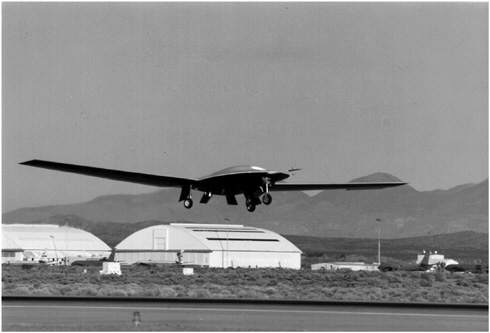
FIGURE 1-5 Darkstar high-altitude, long-endurance UAV. Source: Lockheed Martin Aeronautics Company.
Darkstar
Like Global Hawk, Darkstar (Figure 1-5) was a developmental HALE reconnaissance vehicle. Also known as Tier III-, Darkstar was intended to be the “moderately capable, highly survivable” complement to Global Hawk. It was designed to be stealthy, so that it could penetrate air defenses to perform reconnaissance, surveillance, and targeting missions. The prime contractors were Lockheed Martin and Boeing. Darkstar was designed to carry a 1,000-pound payload, have a maximum altitude of 45,000 feet, a range of 926 kilometers, and endurance at that radius of eight hours. Together, Global Hawk and Darkstar were intended to fulfill the near-term and midterm needs of the Defense Airborne Reconnaissance Office. In late January 1999, the DOD terminated the Darkstar program.
Outrider
Outrider (Figure 1-6) is a tactical UAV developed for the Army, Navy, and Marine Corps for reconnaissance and surveillance missions for brigade and task force commanders. The prime contractor is Alliant Systems. Outrider, a small aircraft with a wingspan of only 13 feet, was designed to carry a 65-pound
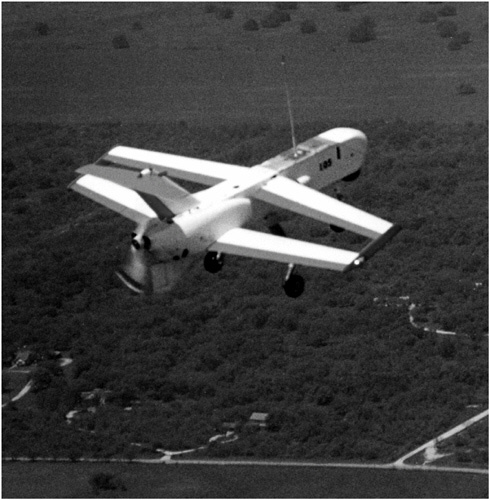
FIGURE 1-6 Outrider tactical UAV. Source: Aliant Techsystems, Inc.
payload, have a maximum altitude of 15,000 feet, a range of 200 kilometers, and an endurance of three to four hours at that radius.
COMBAT PROGRAM
The Defense Advanced Research Projects Agency (DARPA) and the USAF are collaborating on a program to develop a UCAV. The purpose of this program is to demonstrate the technical feasibility of a UCAV that can effectively and affordably perform lethal missions, including SEAD and strike missions, as an integral part of a mixed inhabited/uninhabited force structure (Birckelbaw and Leahy, 1998). As operational concepts and vehicle technologies mature and
UCAV affordability goals are achieved, UCAVs will be able to perform a broader range of combat missions.
The vision for the UCAV is of an affordable system that increases mission options and tactical deterrence, requires minimal maintenance, can be stored for extended periods of time, and, with its dynamic mission control, can engage multiple targets in a single mission with minimal human supervision (DARPA, 1998). UCAVs will perform combat missions that do not currently exist; high-risk missions that do not warrant the risk to human life; or current missions that UCAVs can perform more cost effectively than current platforms.
The affordability of UCAVs will be a result of reduced acquisition costs (e.g., air vehicle unit cost that will be about one-half the cost of a Joint Strike Fighter) and operation and support costs (50 percent to 80 percent lower than the costs of current tactical aircraft). Operation and support costs will be reduced through the introduction of condition-based maintenance, simplified onboard systems, and the ability to keep vehicles in flight-ready storage.
STUDY SCOPE AND OBJECTIVES
The recommendations of foregoing studies and the results of design and demonstration programs all indicate that UAVs have the potential to augment, and even replace, inhabited aircraft in a variety of missions. However, UAV technologies must be better understood before they will be accepted as an alternative to inhabited aircraft on the battlefield.
To augment these studies, the Aerospace and Materials Sciences Directorate of the USAF Office of Scientific Research (AFOSR) requested that the National Research Council, through the National Materials Advisory Board and the Aeronautics and Space Engineering Board, identify long-term research opportunities in materials, structures, and aeronautical technologies to support the USAF’s plans to develop UAV systems. The objectives of the study were: (1) to identify technology developments that would improve the performance and reliability of low-cost, “generation-after-next” UAVs, and (2) to recommend areas of fundamental research in materials, structures, and aeronautical technologies.
Specific committee tasks included the following:
-
Review proposed missions and design concepts for advanced large UAVs that are anticipated to be operating in the long term.
-
Review key requirements for vehicle structures, flight control systems, propulsion, and power, based on a range of potential mission scenarios. For at least one mission scenario, identify the underlying technology advancements needed to achieve performance targets. Consider approaches that could lead to less costly air vehicles.
-
Identify critical technologies and suggest research opportunities that could provide required performance and reliability at lower cost. Research
-
opportunities should address the following vehicle subsystems: air vehicle structures, including structural concepts, structural materials, structural integrity, and health monitoring; air vehicle propulsion systems, including materials and structures, engine control, and fluid mechanics; onboard power systems, including power generation and power management; and vehicle control concepts, including control laws that relate to automatic landing and extremely high-g maneuvers, vehicle aerodynamics, and man-machine interfaces.
The design and manufacture of the UAV is just one critical factor in the development of an integrated battlefield. Although topics such as total battlefield management, command and control, and communications are compelling engineering problems—critical for the introduction of UAVs to the battle space of the future—they are not the subject of this report. Instead, the study focuses on innovations in vehicle technologies that would leapfrog current technology development and would be ready for development and scaling-up in the post-2010 time frame (i.e., ready for use by 2025).
The committee limited the scope of the study to make the best use of available time and resources and to focus on USAF needs. The committee focused primarily on combat and reconnaissance missions, especially the integrated air vehicle and key vehicle subsystems: air vehicle structures, air vehicle propulsion, onboard power, and vehicle control. Cost, reliability, and manufacturability were considered in all deliberations.
Only fixed-wing aircraft were considered. Although rotorcraft and “flappingwing” aircraft could be used by other services, they are not emphasized in the long-term plans (DSRC, 1997; Williamson, 1998). The committee also focused on reusable aircraft with advanced communications and control capabilities that could be operated with some degree of autonomy, de-emphasizing drones, cruise missiles, and remotely piloted aircraft. Finally, the committee focused on aircraft platform and subsystem technologies. Therefore, some important aspects of UAV operation are not addressed in depth in this report. For example, previous reports have recognized that the effective deployment of UAVs will require that individual UAVs operate as part of communications network (i.e., as one of a “family of systems”) and suggested that near-term and midterm research focus on communications and controls technology, human factors, and human-machine interfaces (DSRC, 1997; SAB, 1996). As a result of these studies, substantial research has already been initiated in these areas.
STUDY APPROACH
The committee considered five areas in the analysis of air vehicle technologies: aerodynamics (and vehicle configuration), airframe (with a focus on materials and structures), propulsion systems; power and related technologies,
and controls. Because of the wide variety of possible configurations and missions for UAVs, the committee decided to use notional UAV classifications based on general attributes to identify technical needs for the broad range of potential applications. The committee identified three notional vehicle types indicative of the range of technologies that would support general advances in the USAF’s capability of designing, producing, and fielding generation-after-next UAVs. The notional vehicle types were:
-
high-speed, maneuverable (HSM) vehicles
-
HALE vehicles
-
very low-cost vehicles
Chapter 2 describes the technology needs of the integrated vehicle for each notional UAV classification based on a “systems engineering” approach to air vehicle development. Chapters 3 through 7 identify critical technologies and long-term research opportunities for each major UAV platform subsystem. Chapter 8 summarizes these research opportunities.

